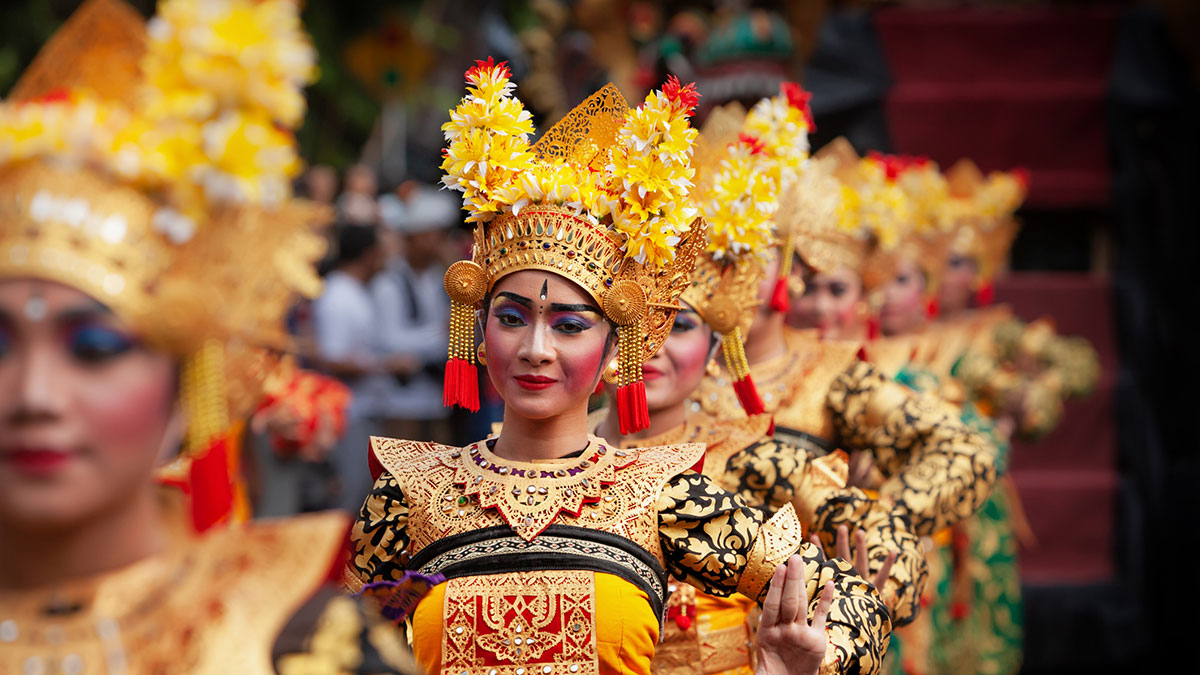Far East has a rich suite of projects across Indonesia and Australia

Far East Gold is inches away from seeing results from its Woyla copper-gold project in Indonesia, one of six strong prospects for the company. Pic via Getty Images.
Far East Gold has made history with the start of drilling at its Woyla copper-gold project in Aceh, but while it is an extremely attractive play, it is just one of six cards in the company’s deck.
Woyla is arguably the richest prize in the company’s portfolio.
The project is a large scale epithermal and porphyry system in Indonesia’s Bandar Aceh region – a known gold province – and is comparable to the giant Gosowong gold-silver mine in North Maluk, which features very similar structures, very similar vein textures and similar bonanza sampling grades.
It is also located adjacent to Baru Gold’s Miwah deposit, which hosts a non-JORC resource of 3.1 million ounces (Moz) of gold and 8.85Moz of silver.
Woyla has been held by major companies such as Barrick and Newcrest, who have mapped out 5.5km of epithermal vein systems that showed outcrop, forming the basis for FEG’s further mapping advancement work to define over 13km of strike length.
But despite their best efforts, they were unable to secure the all-important IPPKH administrative authority required for advanced exploration activities – including drilling – to take place on the forest designated section of the tenement.
Going where no major has gone before
This sorry state of affairs only changed after Far East Gold (ASX:FEG) acquired the 24,260 hectare asset and put in the hard yards that would lead to its being granted the permits to start drilling.
Speaking to Stockhead, chief executive officer Shane Menere noted that the company had done a substantial amount of work such as rock chip sampling and assaying, including samples taken at depth from artisanal workings, which allowed the company to extend the strike of mapped vein systems up to 13km.
The pièce de resistance occurred when the company successfully applied to change the forestry designation of about 7,665 hectares of land within the Woyla Contract of Works area, the key step which led to the company landing its drilling approval – and now the start of drilling which is well underway.

Far East drilling at the Woyla project. Pic: Supplied
“Now that we’ve got the ability to drill, we can put those drill holes where best proposed. We think that it’s going to come back really quite interesting given that some samples returned bonanza results of up to 119 grams per tonne (g/t) gold,” Menere said.
“The area that we’re drilling first is called Anak Perak and to its east, there’s a series of three vein systems which are Rek Rinti, Aloe Eumpeuk and Aloe Rek.”
“We’re moving the IP, that’s the geophysics equipment, over to Rek Rinti and we’re starting the IP survey over there to confirm our drill targets and we intend to drill at Rek Rinti and simultaneously then move the IP work a little bit further south and hopefully prove what we strongly suspect is a continuance or joining of the veins underneath Rek Rinti, Aloe Eumpeuk and Aloe Rek.”
So just what are these targets and what makes them tick?
The Anak Perak vein system is a broad zone at least 1,800 meters long and between 20 and 300 meters wide which contains a system of quartz veins and stockwork zones.
Trench sampling has returned encouraging results such as 2m at 7.64g/t gold and 6m at 4.29g/t gold while ridge and spur sampling has indicated the system is open in both directions along its north-south strike and across strike.
Meanwhile, hand trenching has exposed the Aloe Eumpeuk vein system for 100m along strike with notable results such as 16m at 2.93g/t gold.
There certainly appears to be room for growth with soil sampling defining a zone of anomalous gold about 250m along strike and up to 120m in width.
Aloe Rek mineralisation is located within the Victory vein, which is a complex series of quartz lenses and veinlets that can be traced over a strike of more than 1km with individual veins showing features which typically occur in the boiling zone of epithermal systems.
Trench channel samples returned results up to 1m at 13.4g/t gold while soil sampling outlined a gold-arsenic anomaly up to 70m wide over a strike length of 900m coincident with the vein system.

Location of prospects at Woyla. Pic: Supplied
Last but certainly not least is Rek Rinti, which occurs adjacent to the Sumatran Fault along the northern extensions of the Aloe Rek – Aloe Eumpeuk trend and features mineralisation similar to the low sulphidation vein styles seen at Aloe Rek and Aloe Eumpeuk.
Rock float of vein material assayed up to 24.2g/t gold while highly anomalous silver of up to 138g/t silver have been sampled.
Aceh is also known to host a cluster of copper mineralised porphyry intrusives which have been targeted by companies such as Rio Tinto and Freeport McMoran.
This presents another potential target given that Barrick’s reconnaissance channel rock chip sampling had returned results such as 40m at 0.13% copper and 0.12g/t gold.
With this potential, it is no wonder that Far East believes that Woyla has the potential to be a company-making tier one project.
“It’s got the high grades, it’s got the very large and deep vein system, it’s in a mining friendly area now and we’ve got the team to develop it,” Shane Menere added.
“So we believe that we’re going to do well with Woyla.”
The other giant in the room
While any company would be satisfied with having a single, potential tier one play, Far East has upended the cart a little by having a second such project up its sleeve.
The Trenggalek copper-gold project in East Java is an advanced 12,813 hectare project which was previously owned by PT Aneka Tambang in the 1990s and then ARC Exploration in a joint venture with Anglo American between 2012 and 2014.
“It is really quite an advanced project with close to 18,000m of drilling and a lot of rock chip samples, geochemistry samples, IP resistivity and aeromagnetic work carried out by the previous owners,” Menere told Stockhead.
“It’s in a very similar area to the PT Merdeka Copper Gold’s flagship Tujuh Bukit operation to the east which has an endowment of 30.1Moz gold and 18.9Mlb of copper.”
Previous scout drilling had returned results such as 9.65m at 4.51g/t gold and 8g/t silver from 111.35m along with a further 10.75m at 3.62g/t gold and 9g/t silver from 127.95m within the same hole (TRDD004) and 6.65m at 3.29g/t gold and 10g/t silver in TRDD002.
This prospectivity is enough for the Indonesian Government to rank the project as one of the top three priority greenfield gold project in the country.
“Unfortunately, it had some issues with previous owners upsetting the local community before one of the JV partners took over and didn’t do a very good job either,” Menere noted.
“So the vendor took it back and cleaned it all up again quite a number of years ago and that’s when we made the deal to acquire the project.”
He noted that while Trenggalek is already well understood, there were areas that were not permitted for drilling.
“We’ve taken steps to permit those areas so we can get to it to drill those particular areas and raise the value that way.”
Proven resources
Rounding off the company’s Indonesian portfolio is the intriguing Wonogiri project to the west of Trenggalek in Central Java.
The advanced Exploration Mining Permit (IUP) currently has a JORC resource of 1.15Moz gold equivalent comprising 996,000oz of gold and 190Mlbs of copper with the primary Randu Kuning prospect hosting a shallow gold-rich porphyry deposit with consistent wide economic grade gold and copper mineralisation from surface.
Only the top 500m of Randu Kuning has been drilled to date, leaving the deposit open at depth.
Metallurgical test work has also returned excellent results with up to 89% gold and 93% copper recovery through flotation.
Adding further interest, an internal scoping study completed by previous owner Augur Resources (now Alpha HPA) in August 2016, indicates total undiscounted cash-flow of US$226m, with relatively low capital expenditure estimated at US$38m (US$1,350 Au price and US$5,500/t Cu price).
“It has been around for quite some time. We picked that one up as a partnership deal with the Rajawali group out here who were assigned the project as a majority shareholder for quite a number of years but couldn’t really gain any traction,” Shane Menere said.
“We’ve gained some traction with it and are now focusing on getting the environmental permits and updating the Scoping Study so that we can understand it properly and begin advancing the project next year.”
Spreading the risk
While the Indonesia projects certainly take centre stage, the company has also built a substantial standalone portfolio in Queensland’s highly prospective and upcoming Drummond Basin as well.
Menere noted that while the Queensland assets have been overshadowed by its Indonesian assets, they were interesting in their own right and put together to balance off jurisdictional risk and create different lifecycle positions for each of these projects.
This will ensure a steady stream of exploration news to keep the company fresh in the market’s mind.
“Starting with the Hill 212 gold project, we’ve just completed a drilling program of 11 holes and are in the process of getting the assay work now,” Menere noted.
“We’re certainly seeing lovely textures coming out in terms of a stringer of veins, and main vein system and we observing similarities to Evolution Mining’s Pajingo (Vera-Nancy) project.

Far East’s Australian projects. Pic: Supplied
Hill 212 covers 19.2km2 about 30km east of Mt Coolon and contains an extensive epithermal vein system with over 2.5km of outcropping high-level epithermal veins and vein breccias.
It is right next to the 22.4km2 Blue Gras Creek gold project, which has seen considerably less activity than Hill 212.
“That’s a much less understood area, but we’ve done some Aster satellite work that confirms anomalies are continuing through from Hill 212 in a north-easterly trend line that continues up through the adjacent Blue Grass Creek,” he explained.
“We believe that Bluegrass Creek and Hill 212 are going to be very similar in terms of the main structure that runs in between the two.”
Far East’s remaining Queensland project is Mount Clark West, a porphyry system which shows a significant geophysical anomaly which is coincident with copper, copper-gold, molybdenum chemistry.
“There’s some outcropping porphyry stockwork veins as well that we’re seeing there, but the large, footprint that we are starting to see magnetically that’s most interesting” Menere said, adding that a previous operator had drilled four holes from the main road corridor as close to the target as possible, as they could not get permission from the land owners.
“We think they clipped the edge of mineralisation as the holes returned the 0.1% to 0.2% of copper, nothing outstanding because they couldn’t get the drillpads in the place where they really wanted to.
“Now we’ve received landowner support, gone in and done geochemical work and significant sampling there to give us an idea of the geochemistry at surface. We’ve also just finished the MIMDAS IP work there and that’s showing up some very interesting results”
“We’re waiting for those to be fully interpolated, modelled and sent back to us. Hopefully I’ll have them in late September or early October, as we’ve only recently finished that work.”
ESG and other intangibles
Besides its portfolio of projects, Far East also prides itself on its ESG performance with Shane Menere noting that Far East Gold is the first listed junior exploration company in Indonesia or Australia to join the United Nations Global Compact.
“This is a series of principles such as human and labour rights, commitment to action on environment and anti-corruption, and so forth that we voluntarily choose to adhere to because we were already fully compliant with anyway,” Menere pointed out.
“We are empowering the community, bringing them along by promoting Korporasi in Indonesia and trying to be community and environmentally engaged.”
Korporasi is a cooperative non-profit for the company that seeks to deliver profits for the community.
“We set up a small company, we’ve trained them on how to create invoicing and we’re buying directly from them.
“So it’s small at the moment, there’s only 8 to 10 people engaged in that, but they will represent different areas of the community and as we ramp up our exploration and ultimately production, the Korporasi will expand and grow and incorporate a lot more of the community as well.”
Far East also has an experienced board with very high calibre directors who have been in Indonesia for quite some time.
“We also have a very capable President Director and staff out here in Indonesia who are very well experienced and very well connected through the mining industry, through the layers of government for the permitting,” Menere added.
“So we understand this really quite well and we can make those decisions and those manoeuvres really quite quickly to get us the most efficient results when it comes to Government permitting, and community engagement”
This article was developed in collaboration with Far East Gold, a Stockhead advertiser at the time of publishing.
This article does not constitute financial product advice. You should consider obtaining independent advice before making any financial decisions.

UNLOCK INSIGHTS
Discover the untold stories of emerging ASX stocks.
Daily news and expert analysis, it's free to subscribe.
By proceeding, you confirm you understand that we handle personal information in accordance with our Privacy Policy.








